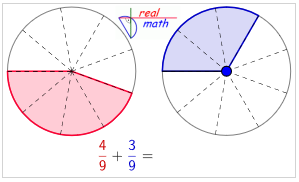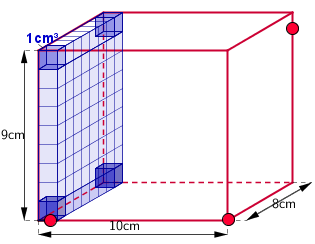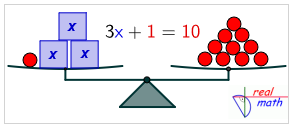Visualize
The E-I-S principle
The principle of variation of the forms of representation, enactive, iconic, symbolic, in short E-I-S principle, is based on the findings of J. Bruner. According to Bruner, the learner engages with these three forms of representation and stages of abstraction. For the successful learning process in mathematics education, the iconic representations play an important role.
In the enactive form of representation, the facts are grasped through actions performed independently. The iconic form of representation includes all experiences through pictorial representations, such as illustrations and drawings. The third system of representation, the symbolic form, uses language and signs with special meaning, e.g. of numbers or arithmetic signs.
The great strength of realmath.de lies in the unique combination of all three forms of representation in the interactive dynamic worksheets. In this context, we speak of the principle of adequate visualization when the representations are used in a way that is appropriate to the problem and the required concept properties.
With the help of interactive dynamic worksheets it is possible to switch arbitrarily between the different modes of representation and to link them dynamically with each other. This means that the symbolic representation changes when the iconic representation is changed and vice versa. This has been proven to contribute to the great learning success with realmath.de.
Examples

Example 1: Adding fractions

Example 2: Volume of the cuboid

Example 3: Equations - Balance model